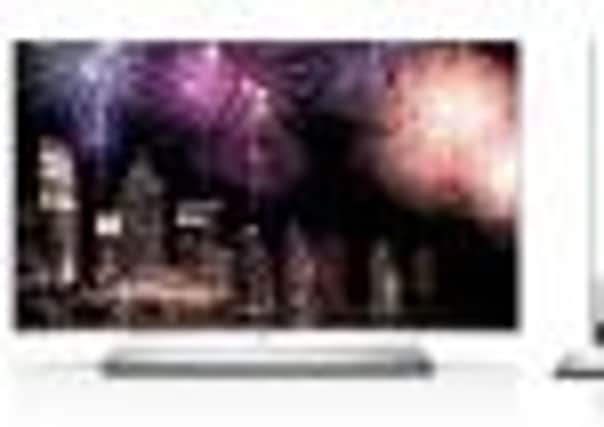Tech Talk: Would you pay more than £6,000 for a TV?


The Korean manufacturer LG is the first off the blocks with a new generation of TV screen lit by organic light-emitting diode or OLED. It’s sharper and brighter than regular LCD or LED screens and viewed from the side it’s almost as thin as a knife blade. A few years from now, most TVs will be made this way.
The first 55in models to roll off the production line will carry eye-watering price tags of more than £6,000. That’s an awful lot for a telly that only looks its best when viewed side-on. But within two or three years you can expect to see reductions of 90 per cent.
Advertisement
Hide AdAdvertisement
Hide AdLG’s first OLED TV, to be closely followed by models from rival Samsung, will measure just 4mm from front to back and weigh less than a third as much as an LCD set. The makers say the screen offers more vibrant and natural images, and better viewing angles, than anything seen before. That’s not hard to believe, because OLED’s predecessors, Plasma and LCD TVs, represented quite a downgrade from old-fashioned cathode-ray sets when used to view standard definition transmissions. It was their size we liked, not the quality.
Today’s sets are better but OLED still represents a quantum leap forward.
However, it’s a leap most of us aren’t going to make until the prices fall to commonsense levels, so if you need a new telly in the meantime your choices are three-fold: Plasma, LCD or the newer LED screens. Plasma sets are biggest, heaviest and most likely to reflect light from your window, but they boast subtler colours than the others. If you’re after a screen of 50ins or more, they are your best choice.
LCD sets still make up the bulk of the market; they’re available in small to medium-large sizes and have become extremely affordable. LED screens are similar but thinner and brighter, and consequently more expensive.
Advertisement
Hide AdAdvertisement
Hide AdBut more important than the display is the picture processor, and many makers – especially the lesser-known ones – aren’t averse to skimping on the quality of these.
If you can, take a look at a TV in a showroom before you buy – and judge on what your eyes, not the salesman, tells you.